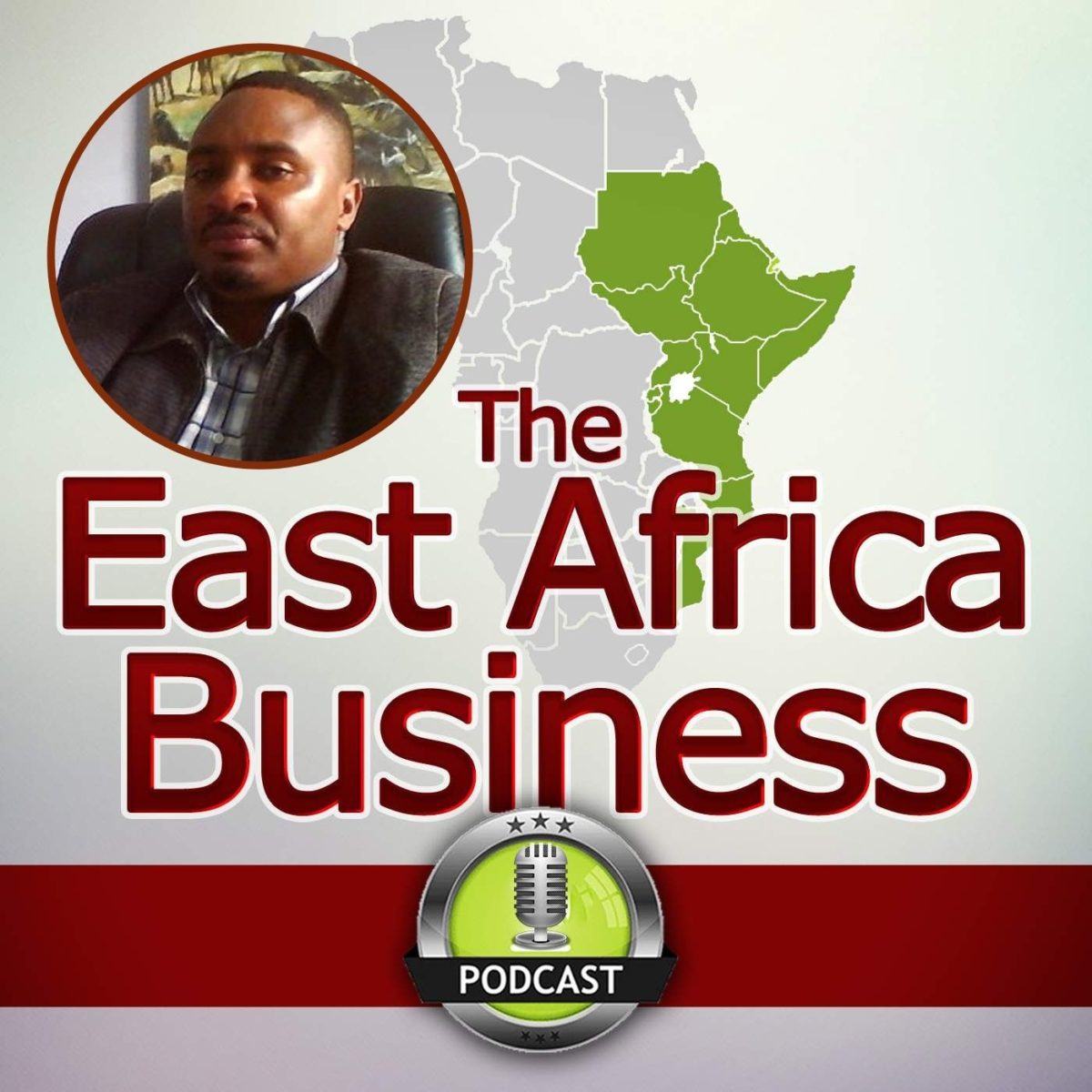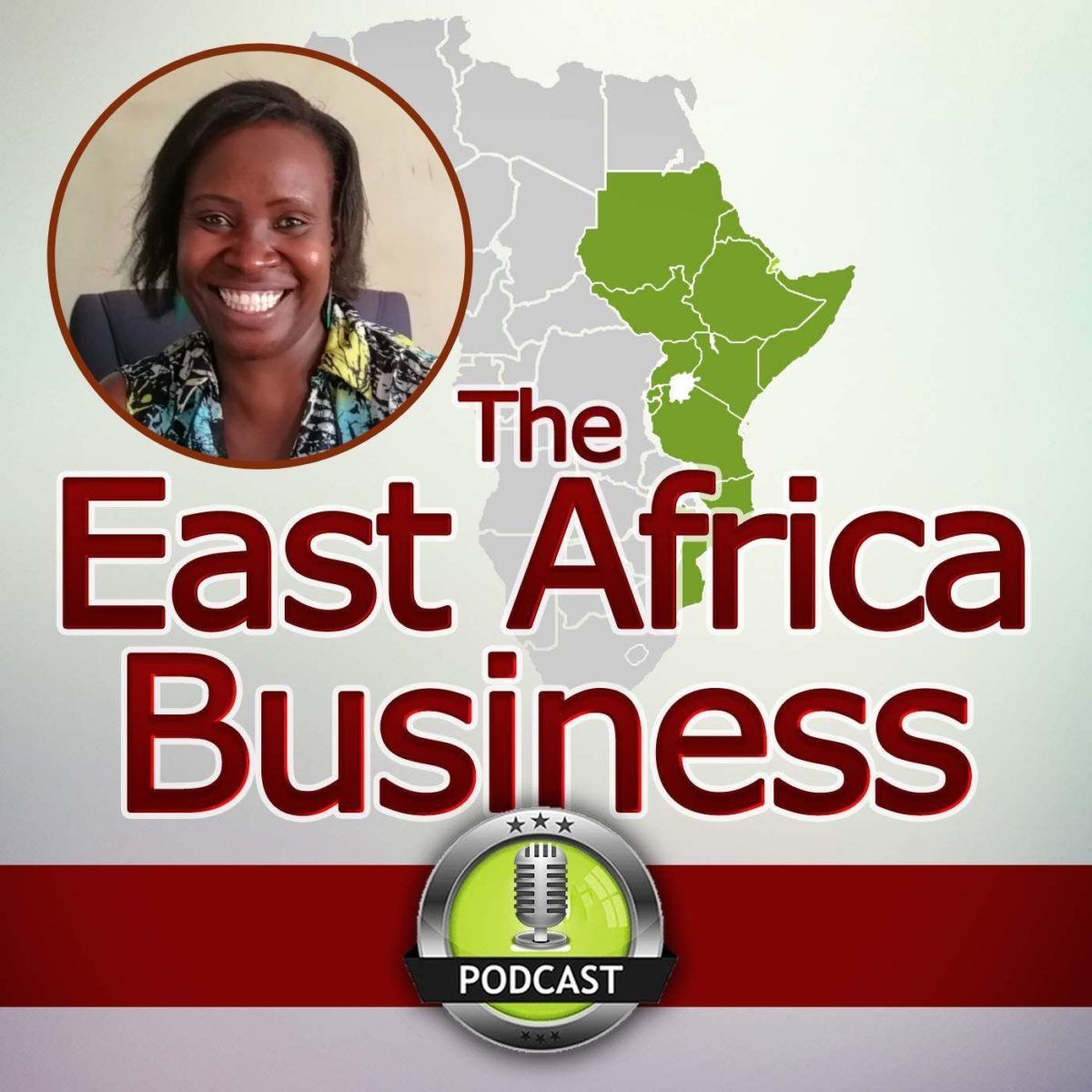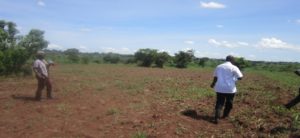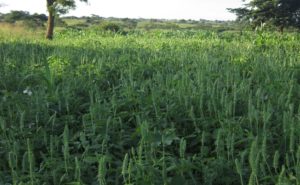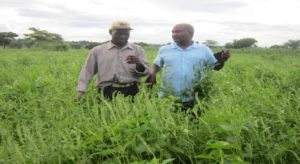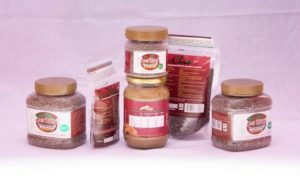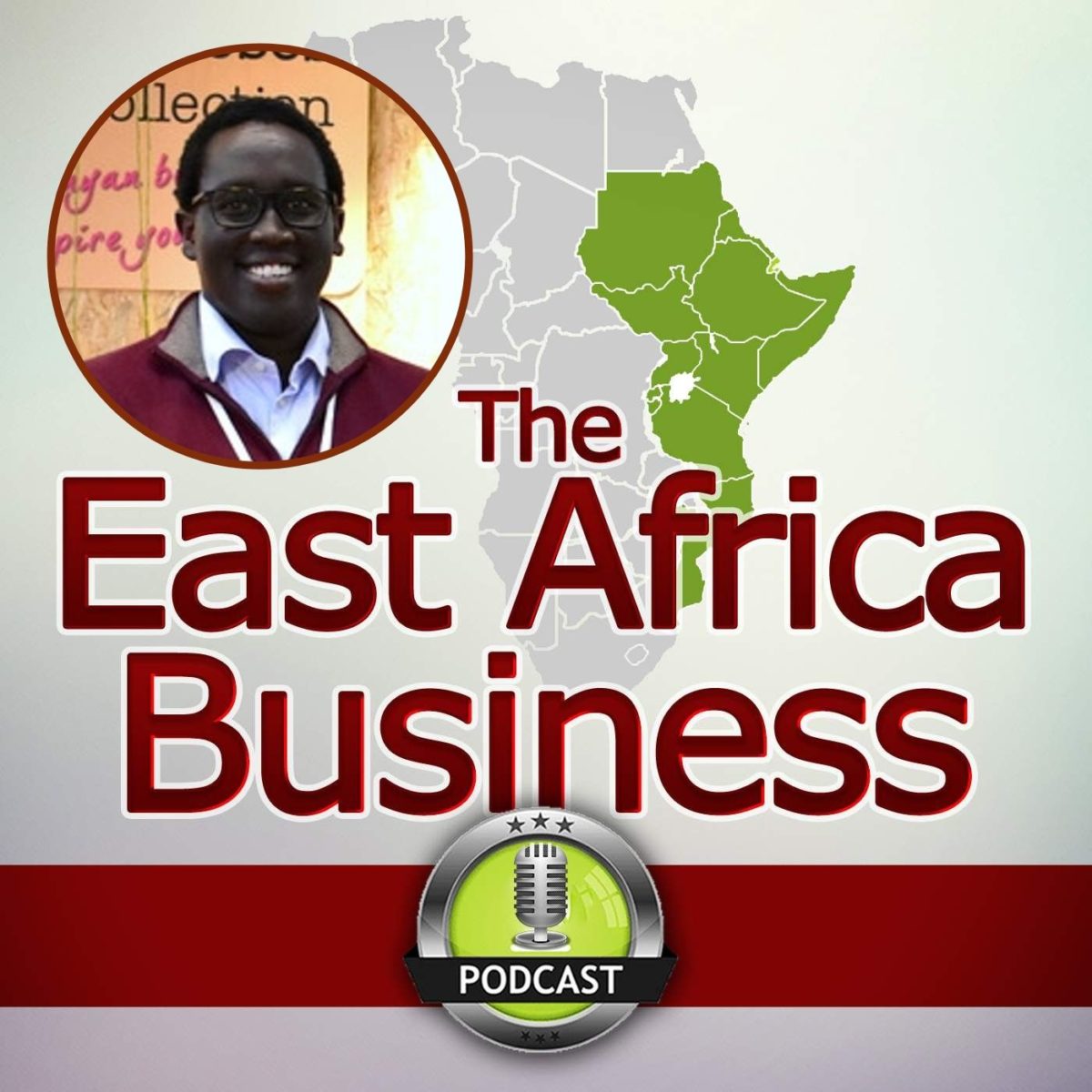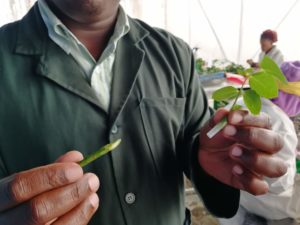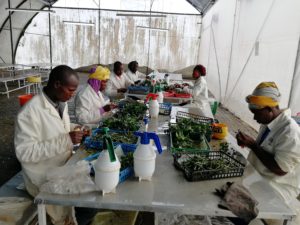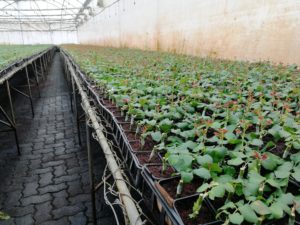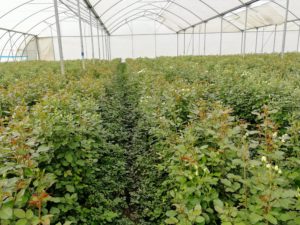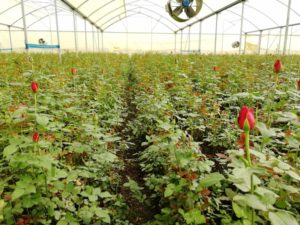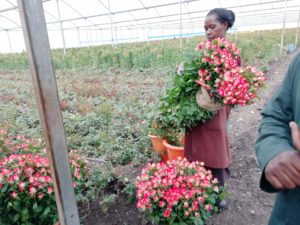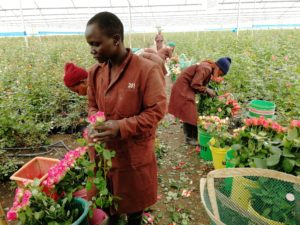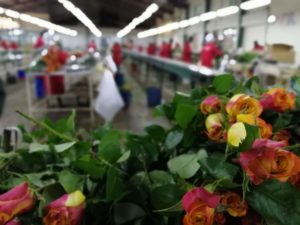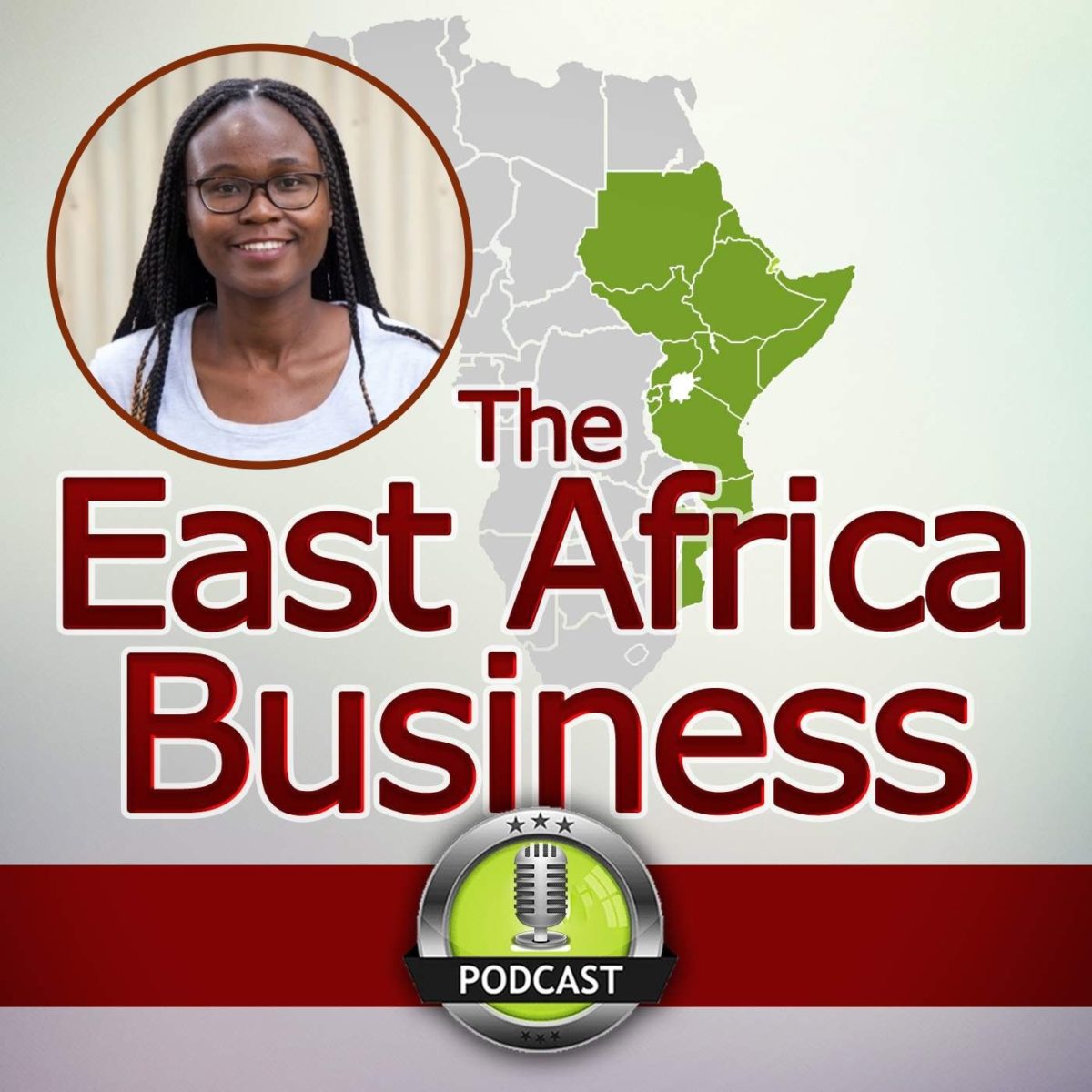Overview
Do you know what the world’s most expensive nut is?
It’s the macadamia nut.
Similar in shape and colour to a chickpea, but up to twice the size, it’s originally from Australia and is now grown in several tropical locations around the world.
In Kenya, the first trees were grafted and planted in the 1970s with a few disparate growers and aggregators each individually trying to generate a market.
Ten years ago Charles Muigai founded Nutpak an industry body for nut processors in Kenya.
They deal with peanuts and cashews too, but the real business in macadamias where they represent Kenyan producers both at a national government level and internationally.
Charles and I chat about all angles of how this industry is growing in Kenya including the minimum “farm gate” price set for macadamia farmers, the process by which they are packaged and ultimately exported, and lessons other burgeoning industries can take for their role on global stage.
Sign up below to hear whenever there are new stories and episodes released on the podcast
Social Media Links
Website: http://nutpak.or.ke/
Transcript
Sam: 00:08 Intro
Sam: 01:58 Cool. So we’re here today with Charles from nut pack, Charles welcome to the show.
Charles: 02:03 Nice. Thank you Sam.
Sam: 02:06 And so to get started, can you tell us a bit about you and a bit about Nut Pak?
Charles: 02:10 My name is Charles Muigai. I’m the chief executive officer of Nut processors association of Kenya. The association that is the umbrella body for industries that are processing macadamia, cashew peanuts and also adding value to the same for the end market. The industry is as old as, say 45 years old. But the initial years it was a more of a monopolistic industry. But towards the year 2005 more players came into place and the industry from then started to expand. By 2009, there were four processors and based on the competition and the competitive lobby of the industry, there was need to consolidate. And this is when, now we founded Nut Pak or nut processing association of Kenya, in 2009. And the main thing was to create a platform that one will back, will support production and make the industry more sustainable in terms of what it produces and through our smallholder farmers and also to interact globally. So it was now back and forward from production to the marketing and also placing the Kenyan product at the global level as a competitive product that can compete alongside South African or Australia. The major driver of the industry in Kenya is macadamia, however, peanuts and cashew nuts are still allied to the same because most of these processes are composite and, they do these three nuts. So this platform has, over the years, engaged the government about policy influence also advocacy. And in 2009, we managed to lobby the government to put a ban on export of unprocessed macadamia nuts and cashew nuts. And that has seen the industry grow five fold because at that point the industry was producing around 10,000 metric tons of macadamia. But right now we are towards 45 to 50,000 metric tons. So, and the plantings across the small holder farmers in Kenya is growing by leaps, then it’s growing very fast.
Sam: 04:48 Very good.
Charles: 04:49 So what you can say, that the consolidation of the industry and this platform has done a lot to bring the industry to the limelight because hitherto the registration of this organization, not to many people knew about macadamia. Right now as we speak, we have 27 licensed processors. So you can see from 2009 from 4 to 27, that tells you a story that many people came to understand the industry, found it attractive. They have come in. But now the next challenge is how to create a sustainable industry.
Sam: 05:25 Yeah. So we’ll perhaps go into some of those a bit later in the interview. So just to be clear, Nut pack is a, like an industry body like you said. Yeah. So you basically represents the process but not processes that exist. And whereas before it might be difficult for one individual company to go and lobby the government, when they, when they come as part of a group, you then have much more power.
Charles: 05:49 Have legitimacy and the voice.
Sam: 05:51 Exactly. Is it, out of interest, is your, is your background in nuts?
Charles: 05:56 No.
Sam: 05:56 Alright. How did you, how did you come into it?
Charles: 05:59 I would call myself an agribusiness you know, consultant.
Sam: 06:04 Okay. Alright.
Charles: 06:04 I’m an exert in trade and also agribusiness.
Sam: 06:07 Sure.
Charles: 06:07 So, and I think that at that point, that’s where I came to organize a workshop for the industry. And…
Sam: 06:14 Why did you choose nuts?
Charles: 06:17 Well, it just happened by chance. I was facilitating a workshop on sustainability of the industry, sponsored by their ministry of agriculture as a consultant. And then the thing we discussed then was that why should we look at it as a hostile competition arena? But I said it can be complimentary again. So it’s a question of how you look at it. And I think the wisdom that revealed then was that we can bake a bigger cake and then we would get a healthy slice of it.
Sam: 06:47 Yeah.
Charles : 06:47 So and that is how, now they, want called the focys of NUT pak is, create a more sustainable industry, stimulate more plantings, stimulate more production, and then everybody gets a share of a sizable amount of produce.
Sam: 07:05 So basically you said you should do this. And they said, go on the Charles, you do.
Charles: 07:12 And here I am, 10 years down the line, I’m still doing it.
Sam: 07:14 Very good. Okay. So for people who are perhaps unaware could you give like just a brief overview of, of like the Kenyan, Kenya’s’s history with nuts. So you mentioned macadamia cashew and peanuts. So those are the three. Historically, those always grown here or have they been a recent recently like…
Charles : 07:35 Macadamia was first introduced in Kenya by an Australian, Bob Harris early seventies, in Thika.
Sam: 07:46 Thika is like an hour from Nairobi?
Charles: 07:48 Yes, an hour from Nairobi. And from there the first plantings were not commercial but eventually the commercial production started, by around 1974. That’s when the fast company, the Kenya nut company started processing macadamia.
Sam: 08:05 Okay. And what does it look like? So nuts are grown on trees or are they not plants, is they, how are they when you say that the first macadamia nut were brought here…
Charles : 08:17 It was brought as a seed, a seed nut.
Sam: 08:19 Brought as a seed, and then…
Charles: 08:20 Then it was planted. And then multiplication through propagation and grafting, that now gives, multiplies the seedlings. So macadamia is a tree.
Sam: 08:32 A tree, Okay.
Charles: 08:33 Right.
Sam: 08:33 Is it a big tree?
Charles: 08:34 It’s a big tree yes. Is a sizeable tree. So medium, medium sized tree.
Sam: 08:38 Okay.
Charles: 08:38 Yeah. That can produce even up to 50, 60, 70 kilos depending on how you feed the tree. Is a tree that has a lot of longevity.
Sam: 08:47 Okay.
Charles: 08:48 In terms of the tree can span 50, 60 years still in production. So once you farm the siblings, it takes around five, six years for optimal production.
Sam: 08:58 Okay.
Charles: 08:58 You’ll get enough produce from the sixth, seventh, eighth, ninth, 10 year, all the way to maybe another 50 years the tree will still productive.
Sam: 09:05 Okay. So the first macadamia trees were planted when Bob, was it Bob Harris, when he came, they are still producing.
Charles: 09:14 They’re still producing.
Sam: 09:15 Yes.
Charles: 09:15 Yes. And they’re still okay. And what’s sort of, and then eventually the tree will die?
Charles: 09:19 Eventually the tree will die, yes as…
Sam: 09:20 As altruistic.
Charles: 09:23 Yeah.
Sam: 09:24 Okay. And so what does it with the macadamia nuts, is it like a pod? How does, I’m trying to visualize whether or not it’s all on the tree.
Charles: 09:32 No, they’re not. It’s a fruit. Let’s say it’s a fruit.
Sam: 09:35 So basically, so you’ve got a macadamia tree. It has these, so imagine that it’s a fruit that’s growing on it. And then within that fruit, when you crack it open, they’re really, they’re nuts. Similar thing with cashews?
Charles: 09:45 Yes, similar thing with cashews. Cashew is an apple, is an apple like, but with an offshoot of a nut also that you you crack again to get the kind of insight. Yeah.
Sam: 10:01 Yes. And then what do you do with the Apple?
Charles : 10:03 Well, in other places in the world, especially West Africa, I have seen they’re making apple, you know, cashew apple juice.
Sam: 10:10 Cashew apple juice?
Charles: 10:11 Yes. Making that they are also making cashew wine…
Sam: 10:15 Really?
Charles: 10:15 From the apple, yes. So…
Sam: 10:17 Do you do that here?
Charles: 10:18 No, we don’t do it here.
Sam: 10:19 Why not?
Charles: 10:20 We are not doing it because we don’t produce enough cashew. There are challenges that are particular to where it grows, especially at the costs. They think…
Sam: 10:29 Cashews grow at the coast?
Charles: 10:29 Yes, majorly grows at the coast. Although we have some belts in the Eastern province in Tharaka Nithi county where we also growing some cashew nuts.
Sam: 10:40 What is a reason why they grew at the coast?
Charles : 10:43 I would say because of the Sandy soil. It’s also a coast base crop, I think that’s the ecological zone for it? Yes. So are there other parts in East Africa or Africa where…
Sam: 10:54 It’s still growing at the coastline?
Charles: 10:56 If you come from Kenya, Tanzania all the way to Mozambique, you will find, yes. If you go to the coast of West Africa from Cameroon there you will goal the way to Senegal, are not native to…
Sam: 11:16 So macadamia is not native to Kenya. It’s native to Australia.
Charles: 11:19 Australia.
Sam: 11:20 So they’ve come, are there any…
Charles: 11:21 And Kenya is a first African country to start macadamia production.
Sam: 11:26 Are there others that have now followed.
Charles: 11:28 Then South Africa followed and then other smaller countries. Mozambique, Malawi, Zambia, Zimbabwe, Rwanda have now started and Uganda is coming up also.
Sam: 11:42 Yeah.
Charles: 11:42 But Kenya is the third major producer of macadamia in the world.
Sam: 11:48 So Australia…
Charles: 11:48 Australia number one, South Africa number two or thereabout, Kenya number three. Then we have other countries like Guatemala, we have Brazil, we have Vietnam. They also grow macadamia.
Sam: 12:00 And so they’ve all taken this, this seed from Australia and taking it and began their own production in other parts
Charles: 12:08 In other parts of the world, yes. Yes.
Sam: 12:10 Okay. So it takes about, so from the, it’s quite interesting. So 1970, this is when the first macadamia nut came and since then it’s been sort of flourishing who, who is growing the macadamia nuts?
Charles : 12:24 Right Macadamia in Kenya as opposed to the rest of the world, especially the big two South Africa and Australia. They grew macadamia through plantation, large scale plantations. But in Kenya we are majorly on smallholder scale and these small holders, you’re talking of a farmer with 10 20 trees, whoever is doing it more is maybe putting one Hector or two hectares, but majority you you’ll see it’s a number of trees that is a main denominator here as in we have 10, 50, 30, 40 or something like that.
Sam: 13:02 Yeah.
Charles: 13:03 And macadamia grows within the central Mount Kenya region.
Sam: 13:06 Okay.
Charles: 13:07 That is the home of macadamia.
Sam: 13:09 And so what happens, so the, the farmer, smallholder farmer, they will buy some macadamia seedlings and develop a tree and then five years later it begins to…
Charles : 13:22 Yeah. What happens is that most of the processors in their own interests propagate seedlings.
Sam: 13:28 Okay. So the process. Got it, so it’s not the farmer that starts the process. It starts the cycle…
Charles : 13:35 It is the processor who propagates the seedlings and then they avail the seedlings to the farmer at some price. Then the farmers, now plant the trees take care of the trees. Then the processors of take the produce from the farms process package.
Sam: 13:51 Yeah.
Charles: 13:52 Export.
Sam: 13:52 Export.
Charles: 13:53 Yes. The main export destinations being Europe and the US.
Sam: 13:58 Got it.
Charles: 13:59 Though, also, Japan is also a buyer.
Sam: 14:01 Really?
Charles: 14:01 Yes.
Sam: 14:02 Japan. Is that a recent thing? Japan wanting to buy macadamia nuts?
Charles : 14:07 Yes, it’s a traditional buyer of macadamia since macadamia processing started in Kenya.
Sam: 14:11 Okay.
Charles: 14:11 Yeah.
Sam: 14:12 Okay, so the main agents to sort of the main person to get this thing going is macadamia nut processing plant. Nobody said, right, we’re going to set us up and then right. In order for us to process, we need to get some macadamia so we’re going to go out into the local community and give people these trees to them.
Charles: 14:33 Yeah. I would call macadamia processors the epicenter or the business as in the business both ways oscillates or revolves around them. In terms of, as I said, the production, they reach down or upstream, whichever you want to call it. And they go down, shoot to the market after they process. So they are in between.
Sam: 14:56 Got it.
Charles: 14:56 Meaning that there needs to be, and this is what the association is up for, to make sure that the farmer and the processor are tied to the hip. They must collaborate because the processor doesn’t have his own orchard. He’s relying on what the smallholder farmers producing. The smallholder farmer doesn’t have his factory to process so the two must work together. Right. So it’s a partnership of win-win and that is why now the processors find it in their interest to propagate the seedlings, supply the farmers, create some intimacy with the farmer to make sure that the farmer is supported on production and best practices. And then the processor will off take the produce right from the farmer through different buying stations across the farmlands. And then after that they will bring to the factory process and then forward the processed material now to the end markets in the US Europe or wherever.
Sam: 15:59 Very good. Okay. What does, in what state do the processes by the macadamia nuts, as in are they still shelled? They still in their shell?
Charles: 16:11 Yes. They macadamia. Macadamia is ideally supposed to drop on the ground when it’s ready for harvesting.
Sam: 16:17 Okay.
Charles: 16:18 Yes.
Sam: 16:18 The farmer just goes around and collects.
Charles: 16:20 Yes. They’re supposed to drop.
Sam: 16:21 How many seasons does it have exactly once a year? Does it happen all year around?
Charles: 16:26 There are trees that are all year round, but there is a peak and the peak season for macadamia is between April, June, July and August. Then we have a short crop. November, December. Yes. So, but basically what happens is that the farmers now will consolidate the produce, they will remove the outer casing. We call the, the outer casing, the green outer casing, so that now they, they, they can now produce the nut itself, right. Once they get the nut, the nut itself is what the processor will buy.
Sam: 17:03 So the farmer will remove the outer pack. The outer casing?
Charles: 17:06 Yes.
Sam: 17:07 Okay. And then take a, take a bag and go to the processor.
Charles: 17:12 They will go to different buying centers that are located within the villages.
Sam: 17:19 Okay.
Charles: 17:19 Who watch are sponsored by respective buying companies.
Sam: 17:24 The smallholder farmers, they can choose which processor…
Charles: 17:27 Which processor to sell to, they’re at liberty to sell to any, they are not bound by one. However, they are processors who have contract farming arrangements with particular farmers, especially those farmers who are producing organic macadamia. So they have a pact between the two.
Sam: 17:48 And if they were to do contract farming, the processor would say I promised so long as they meet certain quality,
Charles: 17:55 Yes,
Sam: 17:55 I promise…
Charles: 17:57 They’ll put the parameters in.
Sam: 17:58 Yeah.
Charles: 17:59 And then they’ll put the price index for it and then the processor will go for the nuts probably the nearest point. Where the farmer is.
Sam: 18:10 Okay roughly how much does it cost for, let’s say, kilo of unprocessed macadamia?
Charles : 18:17 We call it farm-gate price for the clients, and farm-gate price for macadamia in Kenya is, I think the closing price for the season 2018, 2019 was $2
Sam: 18:32 $2? So $2 per kilogram?
Charles: 18:35 $2 Per kilogram.
Sam: 18:35 Is the Farm-gate price. Okay. So the, the processes there, if they want to buy a hundred kilograms, they’ll pay $200 and they got up cooked
Charles : 18:47 And that makes macadamia the most lucrative crop in this country. Yes.
Sam: 18:52 It’s a pair of kg, basis,
Charles: 18:54 On per Kg business, is the most lucrative.
Sam: 18:56 And why. Is that? Just because it’s…
Charles : 18:59 It’s just purely an export. Next port. It’s 97% export. Okay. So what I can tell you is that the global production of macadamia, is under 220,000 metric tones.
Sam: 19:12 Okay.
Charles: 19:13 Yeah. And it represents 2% to 3% of the tree nut or the tree nut family.
Sam: 19:24 What do you mean the tree nut family them.
Charles: 19:25 Any nut that grows on the tree cashew included, peanutnut, walnut yeah.
Charles: 19:32 So it’s 2%, 3%. Okay. So the farm is Ivanka is $2. What are the main things that the processor is doing?
Charles: 19:41 The main thing is that because the farmers don’t have that technology to, to preserve macadamia at the farm level because macadamia is sensitive, you need to dehydrate.
Sam: 19:53 Okay.
Charles: 19:54 To remove moisture from it. So the first of the first thing that we need to do is to remove the moisture. Most of the times that farmers will give their produce at 20 to 30% moisture content and the processor has to drive that down to 1.5.
Sam: 20:09 And how do do that?
Charles: 20:11 They do it through dryers , there are dryers that are blowing out. I could be the first year with a fund years on boilers and all that to kind of expel the excess moisture in the nut to around 1.5.
Sam: 20:23 But what happens then? So they’ve be en dried out. What’s the next step.
Charles: 20:26 Then? The next step is a cracking crack.
Sam: 20:30 Cracking?
Charles: 20:30 Cracking. Yes. Cracking is now. Shelling, removing moving the shell.
Sam: 20:34 Okay, so you drive them whilst they’re still in their shell.
Charles: 20:36 Yes. You dry while the’re still in shell.
Sam: 20:39 I would’ve thought it makes sense to do it.
Charles : 20:42 No, no, no. It will change its biochemistry if you are to break it and then you’ll be roasting it and the roasting is the last stage.
Sam: 20:49 Okay. I’m getting ahead of myself. Alright, so then you crack the shell.
Charles: 20:54 Yes. You crack the shell and then from there you start the grading process. Yes. Remember you have bought from everywhere, macadamia is graded according to sizes, they are like seven or so grades from stair zero to stair seven.
Sam: 21:13 Okay.
Charles: 21:13 Yeah. Well that is Kenyan, but the other origins that have different classification for it.
Sam: 21:19 And the basic thing they’re looking for is like size.
Charles: 21:23 Size is the basic premium size.
Sam: 21:26 The bigger, the more expensive?
Charles: 21:27 The bigger, the more expensive.
Sam: 21:28 Okay.
Charles: 21:29 Yeah.
Sam: 21:29 So you get graded and then what happens? So then does that mean there’s like the all the grade seven going one bucket, all the grades…
Charles: 21:36 No. You see different customers require different sizes for different purposes. For instance, the small that pieces and all that may be required to go for the ingredients market. Well you want to make cakes using macadamia, you want to make cookies using macadamia as an ingredient?
Sam: 21:51 Ingredients. Yes. Sorry. So they, yeah, they don’t care if it’s a really big executive, just what…
Charles: 21:57 You see now for the snacking sector of the market, you want to have that good appealing big nut.
Sam: 22:06 And then they get roasted or was there…
Charles: 22:08 It gets roasted, salted and whatever people want to do with it up there.
Sam: 22:13 This all happens in the same?
Charles: 22:14 No, it doesn’t happen basically in one factory because some of the buyers in the US would want to roast it near the end market so it will be sent to the US or the Europe in that intermediate form.
Sam: 22:26 At which stage do they normally get sent off?
Charles: 22:29 At the kernel, we call it the kernel, kernel meaning you have removed the shell.
Sam: 22:36 Okay.
Charles: 22:36 And you have graded based on size and then you can send it as such. Then it will go on the final step in the end market. We are by now the final value addition will be done.
Sam: 22:47 Some so…
Charles: 22:50 But some are done here and that’s why you find their products in the supermarket, the finish products that you can, ready to eat.
Sam: 22:56 Do you export to some countries when you have rest of it?
Charles: 22:59 Yes, there are some people who are sending their brands to Europe.
Sam: 23:04 Okay.
Charles: 23:04 Yeah.
Sam: 23:05 So that means that, so you, you basically said, you know, here it is. Did you package it for those European…
Charles: 23:13 Yes. You package for them. You will find them also in the airlines. You find British airways is using Kenyan macadamia product, go to Kenya airways, you’ll find they’re using Kenyan macadamia products.
Sam: 23:26 But the branding is…
Charles: 23:28 Yes. The branding is, is a joint branding between the airline and the local company.
Sam: 23:33 Yeah.
Charles: 23:33 Yeah.
Sam: 23:34 Okay. There were four, there are now 27.
Charles: 23:36 27 players right now and counting.
Sam: 23:40 And counting. Alright. Have you got some new ones?
Charles: 23:42 Well people get into the business every year. New people. We definitely have to get excited.
Sam: 23:48 I mean, how attractive is it as a business, like what’s the sort of rough startup capital you’ll need? What are the sort of returns?
Charles: 23:58 I think that the major challenge to new entrants is what I can call “barrier to entry” because you have to buy the produce from farmers upfront.
Sam: 24:13 Okay.
Charles: 24:14 You either have the cash or you don’t.
Sam: 24:16 Yeah. And typically in order to make it, in order to do it properly, how many kilograms do you think you’re going to need to buy?
Charles : 24:23 I would say you will be sustainable, you’ll breakeven at around 300.
Sam: 24:29 300 tons?
Charles: 24:29 300 tones.
Sam: 24:31 Okay, so you need, you need to pay $600 of raw material if it’s 300?
Charles: 24:36 So what we’re saying is that you need 300 tons. The metric tons.
Sam: 24:40 Tons not Not kilograms?
Charles: 24:41 No.
Sam: 24:42 So three, so 300 times a thousand times two. Alright. So you need one that’s about 600 600 thousands?
Charles: 24:50 Yeah.
Sam: 24:50 Six. Right? So in order to be valued…
Charles: 24:52 US dollars.
Sam: 24:54 $600,000 dollars, that is what you call a barrier to entry. Yeah. Okay, so…
Charles: 24:58 You can see the figure is prohibitive.
Sam: 25:00 Yes.
Charles: 25:01 Yeah.
Sam: 25:02 And then how much would the equipment cost?
Charles: 25:05 Depending, you can go manual and crack with a ball pain hammer, which is now labour intensive again, that pushes the cost of labour high and they also, there is food handling and all that where you can go now for roller crackers that now are mechanical that you will now crack, crack bigger volumes at a time, you know, bigger batches at a time. It depends on the size that you’re buying, but I think at the processing point you will need to probably put $20,000.
Sam: 25:43 Okay,
Charles: 25:43 $20,000. Maybe the infrastructure you need at the processes stage.
Sam: 25:49 Okay.
Charles: 25:49 You will need to put down…
Sam: 25:50 So looking at roughly $620,000 to get going, but what, what’s the upside? So how, let’s say you’ve got 300 tons, let’s say, so a kilogram costs $2 at the farm-gates. Once it’s processed, how much, how much might you be selling?
Charles: 26:09 You are starting to understand for you to process one kilo, you need 4 to 5 kilos.
Sam: 26:16 Really, Oh there’s that much?
Charles: 26:17 Yes. There’s that difference because you see the shell is heavy also and you don’t need the shell. You need the inner.
Sam: 26:22 Okay.
Charles: 26:22 Yeah. So it’s not kilo to kilo.
Sam: 26:25 Okay.
Charles: 26:25 There’s a ratio between now the kernel you get that is now the consumable part and now the fruit, the farmer sales to the processor. And then remember you bought this macadamia at 20 to 30% moisture content. You’re going to dehydrate that to 1.5. So it’s not, as in corresponding, there are several processes that are here and that’s what I’m saying, a factor of four.
Sam: 26:52 Okay, so…
Charles: 26:53 One to four.
Sam: 26:54 So for every four kilograms of macadamia.
Charles: 26:56 In shells, in not form will yield.
Sam: 27:02 Okay.
Charles: 27:02 Yes.
Sam: 27:03 So when you say they need to buy 300 tons, they need to get 300 pounds…
Charles: 27:07 Divided by four.
Sam: 27:09 Okay. So they’re going to end up with 75 tons making. So, okay. So how much does a kilogram of processed.
Charles: 27:20 It depends again on a good and a bad year, but I could put and again the grades that I could probably put per kilo at around $15.
Sam: 27:35 Okay, so four to one. So basically you’re saying you need to pay roughly $8 at the farm-gate to gets $15. Okay. Is this what most companies, most procssors are doing? They’re basically playing the volume game.
Charles: 27:52 It’s a volume game. If you’ve seen the minimum is like 300 tones, what’s the maximum capacity that a processor has?
Charles: 28:01 The big processors are doing a 8,000,
Charles: 28:05 8,000 okay.
Charles: 28:06 8,000 metric tons. But then you will find that people who are doing 1000, 2000, 3000, 4,000, but the largest in Kenya is doing around 8,000.
Sam: 28:17 You said that most of is going to exports.
Charles: 28:21 Yes, it’s 97%.
Sam: 28:24 How’s that sort of like facilitated as in, is this, is this the sort of thing where you need to have trade ageements or is it? Buyer to buyer so to speak? As in, I’m there several buyers in the U S and commodity traders or brokers who are linking to the end users and supermarkets and such.
Sam: 28:48 Okay. So it’s made me going through, it makes me a minute. So basically you’ve been treated as a commodity, so it’s going to say that…
Charles: 28:56 It goes as a commodity. So it’s not like distributed in different places. I see. So is that like the macadamia nut exchange? I’m sorry, is that like no,
Charles: 29:05 There’s no formal exchange like the coffee.
Sam: 29:08 Okay. There’s not, there’s no auction.
Charles: 29:10 It’s not auction driven. What there is is that they are commodity brokers who collect and then sub end markets.
Sam: 29:18 I see.
Charles: 29:19 Yeah. Or there are also directives to supermarkets. Big supermarkets that are, will go on value and even roasters, independent roasters who also will buy go and roast and then have their own, they’re a retail brands.
Sam: 29:32 Okay.
Charles: 29:32 In the end markets.
Sam: 29:33 Is it that the macadamia nut industry is still in its infancy and that one day it will get like an auction like there is with coffee and tea or is it that the dynamics are, or the characteristics different?
Charles : 29:49 I would say that maybe there would be an auction market for macadamia, but again, it must be voluminous for it to modify to be in an auction system.
Sam: 30:04 Okay.
Charles: 30:04 It must also attract enough players for, you know, enough players to, for it to qualify to be at that stage. So it’s a volume and players kind of dynamics that are critical here.
Sam: 30:16 Okay.
Charles: 30:16 And again, it depends, will it be necessary? What solution will it be solving because if the market to market, business to business model still works, then maybe the need for an independent auction system, is not necessary, because price discovery between major buyers and sellers, the interacting one on one and still they’re finding it comfortable because the price points they get is agreeable. So again, that may not make the auction necessary.
Sam: 30:50 Yeah. Okay. So the fact that there is enough transparency in the market.
Charles: 30:54 Yes.
Sam: 30:54 Doesn’t, doesn’t probably make it necessary. Okay. Interesting. And when you say things like the supermarket, so we’re talking about like a US supermarket.
Charles : 31:06 Yes, you’re talking of the Costco.
Sam: 31:08 Okay. And so they will say they will be wanting to do Costco own brand Macadamias. So I’m trying to think. So if I own Costco I’m like, but I’m the head of Costco and I say, right, we need to get our own in brand macadamia nuts and I’ll, I’ll then say, right go out and find a broker, someone who can go and source them. That broker will be speaking directly with the macadamia nut processes in Kenya.
Charles: 31:36 Yes.
Sam: 31:37 Understood, understood. And then they’ll say, okay, well these are the conditions we’re going to buy. We’ve been engaged in a contract, we’ll buy this many tons for the next 12 months and where does Nut pak play in that sort of interaction that’s happening.
Charles : 31:53 What happens? You see we are, what we can call, we’re also are trade facilitator.
Sam: 31:57 Okay.
Charles: 31:58 Right. Because as the association that, our interest is to make the business environment, local and international conducive and supportive of the entrepreneurs and the processors to do business.
Sam: 32:13 Yeah.
Charles: 32:14 Right. And we also are the voice of the Kenya macadamia, Kenya nuts family with other origins because others associations, there’s SAMAC of South Africa, there is AMS of Australia and other others in different countries. You see all of us now form the international macadamia symposium, which is our biannual meeting point to share best practices in terms of production and, especially majorly on production.
Sam: 32:53 Okay.
Charles: 32:53 Then we have the annual meeting that is under the auspices of the international, nut council.
Sam: 33:00 International nut council?
Charles: 33:01 Yes. That now is what we can call the market benchmark.
Sam: 33:05 Yes.
Charles: 33:06 Whereby now the buyers and sellers and all, you know, meet annually, kind of to share their experiences, the love innovations their statistics.
Sam: 33:15 Where do they meet?
Charles: 33:17 We meet in different capitals of the world.
Sam: 33:19 Okay. Where was the last one?
Charles: 33:21 The last one was in the US. We met in the United States in Miami, Florida.
Sam: 33:26 Miami, okay.
Charles: 33:26 Yeah.
Sam: 33:26 International nut council. That sounds quite a fun organization.
Charles: 33:29 Yes. It’s a huge organization that is based in Spain, Barcelona.
Sam: 33:34 Based in Spain, okay. And so that’s basically any nut people, anybody in the nut industry would want to attend.
Charles: 33:43 Wow! That is the mega, you know, the Mecca of the nuts industry, everybody wants to do, to do that.
Sam: 33:53 Did you go?
Charles: 33:53 Yes, I was in there.
Sam: 33:54 I mean, was there, is there any sort of rivalry between nuts, if you meet someone and they’re like I’m a macademia nut farmer, and they’re like Oh, and I do cashews or, or someone’s like, I’m wondering purely of like, are there certain nuts which are seen as more prestigious?
Charles: 34:14 Definately. Macadamia is more prestigious than all the other nuts, it’s called the King nut.
Sam: 34:18 So in, so when someone meets and you say, I do macadamia nuts, Oh my gosh, I only do walnuts like you’re not.
Charles: 34:24 Not necessarily to that extent. Because you see when you talk all the walnuts and you talk almands, you know the dynamics of how they grow is different from macademia. So they are voluminous like produce a lot.
Sam: 34:38 Yeah.
Charles: 34:38 So it’s not a question of which is superior than the other.
Sam: 34:43 Okay.
Charles: 34:44 Not necessarily, so.
Charles: 34:45 Okay. Alright. And there’ll be various people who are giving talks about best practices. What I’m interested, what are some of the innovations that are happening in the macademia nuts industry?
Charles: 34:56 You see the major innovation and especially at the international nuts and dried fruit council is looking at nutrition research, is looking at different ways and cuisines that can take macadamia. How many other ways can we consume the nuts in general?
Sam: 35:18 Okay.
Charles: 35:18 Right. Do we go heavy on snacks? Do we go heavy as ingredients in other food items? So it’s a question of the versatility of consuming these nuts in different forms in different homes, in terms of also demographics, how your children find there nuts more palatable. So that’s a research point, right? If you’re talking about nutrition challenged people, in what form is it pulpy, how do you give it to them and all that. Again, that’s a research point? We’re talking about now that people want to eat more nutritious foods, we want to run away from issues of heart attack from issues of cholesterol, you see you got, that’s a research point again because we’ll say macadamia is cholesterol free. So you see, you need to disseminate that research needs to be done. So most of the things is about doing research across the board. Innovations in terms of processing what are the new machines that are more efficient, more cost effective and all that, that require. So what I can say is that the conference around international nut council is around the innovations, production, marketing, consumption, data sharing, statistics, what’s the market outlook. So it’s quite dynamic it’s full of information that is across the industry, that makes you now more prepared to do business.
Sam: 36:56 Got it.
Charles: 36:56 If you’ve got now to the international macadamia symposium, it is majorly now on the production side, the agronomical post-harvest management systems around it just to see how can we produce the best nuts. What is the research on the best yielding varieties, what’s the best research on crop husbandry, best practices in crop post-harvest management and all that pest management. You know, there’s all those issues around production. How do we optimize production. So that is majorly the symposium issue.
Sam: 37:31 Very cool. Okay. Has one of the, the themes recently been this trend of people eating less meat and nuts being a good source of protein?
Charles : 37:44 That’s the thing we’re talking about, it’s substitute. They’re saying macadamia oils or macadamia nuts themselves, it has unique nutritional parameters that are better than animal proteins or animal fat or something. Right. But anyway, that is the progress now of the medical nutrition research people. Yes.
Sam: 38:07 Okay. Alright, cool. Okay. Is there a, is there scope, do you think that if and more, you know, if supply was able to increase…
Charles : 38:19 If supply was able to increase and the farm-gate prices what to go down, then the end market shelf, supermarket shelf price or retail price would go down.
Sam: 38:30 What do you recon is a realistic farm-gate price?
Charles : 38:34 We did a gross margin on macadamia production at farm level and it cannot go beyond 0.4 of a dollar, right?
Sam: 38:46 So currently it’s at $2 and they weren’t able to go below…
Charles: 38:49 It’s good. Their production costs can not go above 0.4 of a dollar.
Sam: 38:54 I don’t quite understand when you say the production costs.
Charles: 38:55 You’re talking of, you see production cost means all the investment you put in place before you harvest or before you sell.
Sam: 39:06 Before you sell. Okay.
Charles: 39:07 And I’m saying it cannot in any way be more than 20% of the sale price.
Sam: 39:17 When you say it cannot…
Charles: 39:19 Because we have done the gross margin analysis for the crop, what does it take for you to produce a kilo of macadamia, and we’re saying in Kenya for you to produce a kilo of macademia, your investment cannot go beyond 0.4 of a dollar.
Sam: 39:37 Okay.
Charles: 39:37 Yes.
Sam: 39:39 What are some of the ways in which macademia nuts are being eaten?
Charles : 39:42 It’s majorly, the major market for it is snacking, the way you get a snack on the way, but the growing one is macadamia being incorporated in other speciality foods.
Sam: 39:58 Okay.
Charles: 39:58 Yes. As an ingredient. Yes. And that is now the growing area.
Sam: 40:02 Cause what is it about macadamia nuts which makes them, what do they have which other nuts don’t have?
Charles: 40:08 One, they have a very nice taste profile. Probably that’s why you like eating them, they have a superior taste profile, they are crunchy very palatable. They have quite a good character around it. And then as I say, the nutritional analysis for it, they are one cholesterol free, they will give you, I don’t know how they, all the nutritional parameters, but you will see…
Sam: 40:35 It’s very good.
Charles: 40:36 It’s very good. Yeah. It’s recommended as a healthy snack, especially for weight, choolesterol lowering and all that. So it has a good position in the nutritional matrix.
Sam: 40:50 Okay. So we’ll just do a few more questions if that’s all right. What I’m interested in is, as you said, 10 years ago, you were an outsider. You didn’t, you didn’t really know much about the industry and now your here sort of the head of the industry body. What have been some of the biggest insights you’ve had along that journey?
Charles: 41:13 I think the thick of the insight is that it’s looking at the sustainability factor for an industry and for you to make an industry competitive, you got to understand the issues of the denominator.
Sam: 41:31 Of?
Charles: 41:31 Denominator issues.
Sam: 41:33 Okay.
Charles: 41:33 Understanding that you must protect denominator issues and then fight above or compete above the denomination and denominator issues means the fundamental issues that you need to sort out first.
Sam: 41:46 Okay.
Charles: 41:46 You need to sort the issues of production. You must produce enough in terms of good quality. You must produce enough also in terms of good pricing points, right? You must produce through smart agriculture so that, you know, whatever you’re doing is in tandem with best practices for it. You must also work within an environment, create the conducive environment for you to be able to acquire the raw materials. Remember most of the processors here don’t have their own farms. So they are relying on the farmer. So they must do production support and that’s what I’m calling the denominator issues first. Then you compete when you have sorted the fundamental issues. If you start fighting below the fundamentals, you collapse the industry. Right? So to create competitiveness, the word competitiveness is very important. Competitiveness at farm level, let the farmer earn their due margin then let the processor earn he’s due margin and let the customer get the best value for the product they buy. Yeah. So that trajectory is what will create a stable industry. Then again, the learning point is about the collaboration with government. Government requires to understand that for an industry to thrive, you got to provide the right policies for it. And as I have said, I have seen the ban on exporting unprocessed macadamia in Kenya has accelerated the growth of the industry from four to 27 from 10,000 metric tons to 45,000 metric tons in a span of 10 years. That tells you the growth factor is good.
Sam: 43:38 And I mean, and I guess that also means that rather than selling produce at $2 a kilogram and selling it at $15 a kilogram.
Charles: 43:46 That’s the thing, value extraction is high.
Sam: 43:48 And that all the extra $13 is kept.
Charles: 43:52 It’s captured here, it’s retained in the country.
Sam: 43:54 Yeah.
Charles: 43:54 So value addition is important in my view because they retain the value to the origin country’s high. Why would you want to export dollars and jobs?
Sam: 44:07 I mean was, was there any backlash?
Charles: 44:09 There was a backlash because you see people will have their own vested interests around every issue, but you see the bigger picture or the bigger agenda will always prevail.
Sam: 44:19 I was about to say how did you overcome it?
Charles: 44:21 We lobbied the minister responsible for, for agriculture to really understand what is this value capture that we are fighting for? Because what you’re saying is that can we keep as many jobs local? Can we earn as many dollars and bring them to the country? That’s foreign exchange and such. How do we do that? We do that by manufacturing. There’s no country that develops by exporting raw materials.
Sam: 44:52 And what, what do you think is next for Nut Pak, in the next…
Charles: 44:55 The next thing is now to consolidate the industry further.
Sam: 44:58 Okay. We say consolidate, what do you mean?
Charles: 45:00 Consolidating means that we are looking at the success factors and how those success factors hinge on making the entrepreneurs and processors more profitable.
Sam: 45:12 Okay.
Charles: 45:13 Right. We are looking at how rather than having it fragmented is a question of how do we bring everything together so that everybody benefits from the synergies that accrue from joint effort.
Sam: 45:26 What does that look like in practice?
Charles: 45:28 In practice. What we mean is that we are looking at what are the issues that we need to address. We need to have early warning systems around the crop. Will there be a crop failure and next year we need to have an early warning system around it. We need to understand what are the agronomical challenges facing our farmers and address those issues including extension. How do we go and disseminate best practices across our farmers, crop quality, how do we manage the crop quality across these diverse farmers, what are the programmings that we need to put in place to make sure that we consolidate and standardize production across many farmers so that we can have a crop that is as good as what you find in Australia, as good as you find in South Africa because all of it is competing in the same marketplace. Yes.
Sam: 46:23 And that’s something which nut pak will probably…
Charles: 46:25 Yes. That is a cutout for the association to make sure that synergies are brought together and people are achieving the grand picture or the strategic picture together.
Sam: 46:42 How does nut pak make money?
Charles: 46:44 The association gets its money from subscriptions.
Sam: 46:48 Because of the 27 processors.
Charles: 46:49 They each pay based on the size.
Sam: 46:54 Okay. So you’re basically saying based on your production?
Charles: 46:57 Based on the, not production, processing, the amount of nuts you process.
Sam: 47:03 Okay.
Charles: 47:03 So we have a formula.
Sam: 47:05 And now they’ll pay an annual fee.
Charles: 47:06 They pay us at an annual fee. Yes.
Sam: 47:09 And so just to sort of finish up, you know, fit people who are looking to learn more about what, nut pak does or looking to perhaps you know, buy some very nuts, buy nuts that grown in Kenya. What are some of the best ways that people can learn and learn more about what it is that you do and perhaps get in touch with some, some other producers?
Charles: 47:28 I think what do is that we have our learning platforms especially at the farm level. We do a lot of field days to educate farmers on the emerging best practices and giving them my expectations as processors on what we required them to do so they can produce the right quality material. We also disseminate the research, the new research that we get from our international partners that are doing macadamia and such. We also lobby and educate government, especially the county governments to really understand the position of the crop and how it can change and impact the lives of the common person, especially the farmers in the radius. As we have said, it’s one of the most lucrative crops on our farms. That means it’s an engine that can be very formidable in poverty eradication and such. So more resources needs to be put there naturally if something has the potential to change the lives of people. But you see that comes from awareness. We need to disseminate this picture, quote to the value proposition across to the counties so that they can see the value of the crop also. And then again to kind of support the environment around processing lobbying issues on energy, costs of power, cost of doing business across a country, licensing law that, you know, we will get involved where we feel that it’s adverserial to doing business.
Sam: 49:09 And people who are listening at home, how can they learn more about some of these things, is there…
Charles: 49:14 We have radio programs that we do with vernacular radios that disseminate our information.
Sam: 49:19 You have radio programs?
Charles: 49:20 Yes. Yeah.
Sam: 49:23 You’ll go on the radio and talk about?
Charles: 49:25 Yes, we gone radio, we do announcements based on when we expect the crop to be ready and all that.
Sam: 49:31 Okay.
Charles: 49:31 So we do announcement to say where we have some educational platforms, you know in collaboration with key stake holders. So the messaging to farmers. We also use mobile phone, a s ystem whereby we disseminate now SMSs based on different parameters or different information points that we feel are necessary to farmers.
Sam: 49:53 And if people want, if people want to buy macadamia nuts in Kenya, what’s the best way for them to do that?
Charles: 49:59 The international buyers?
Sam: 50:00 Yeah.
Charles: 50:01 The international buyers, as I said, we have a platform for the international nut council where the buyers and sellers mingle make their deals.
Sam: 50:10 Okay.
Charles: 50:11 So yeah.
Sam: 50:12 Fantastic. Very good. Cool. Well Charles, thanks so much.
Charles: 50:14 Thank you Sam, excellent.
